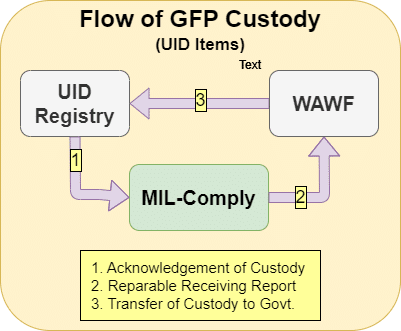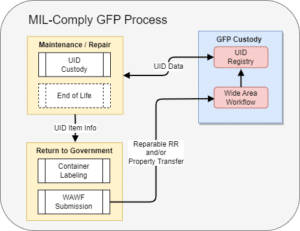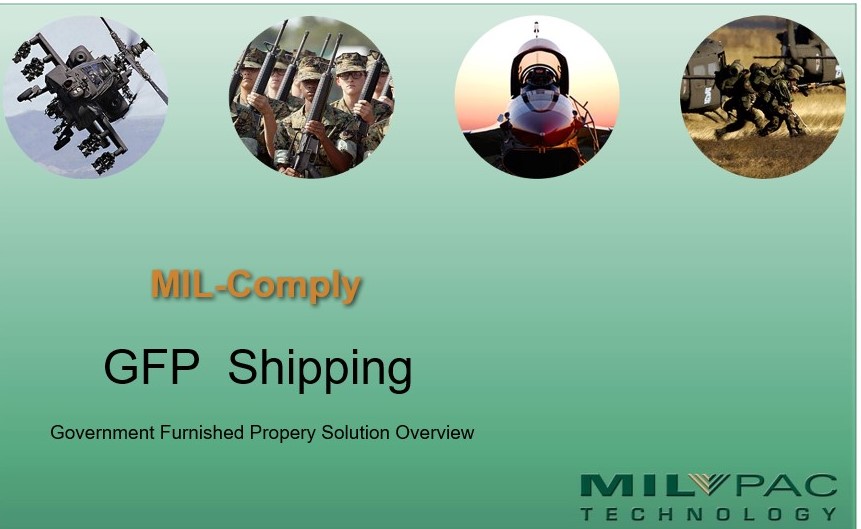UID shipments of Government-Furnished Property (GFP) present a unique set of challenges to contractors, primarily the need to use the WAWF RRR transaction. The Reparable Receiving Report (RRR) itself is the easy part. The RRR is the same as the standard Receiving Report with just a few additional pieces of data.
The added complexity of shipping GFP UID items on an RRR is due to the WAWF requirement that custody of them be acquired from the IUID Registry (PIEE) first. Items not found in the UID Registry must added. View our GFP Shipping video for an overview of the MIL-Comply process which does all of this without any need to access the PIEE website.
The standard Receiving Report (DD250) adds items to Government inventory, while the RRR simply transfers custody of existing items from a contractor to the Government following their maintenance, repair or overhaul (MRO). The DFARS requires that the Reparable Receiving Report be used when shipping GFP.
WAWF will reject RRs for UID items that are already in the UID/IUID Registry. Shipping unregistered GFP items on a standard RR results in WAWF adding them to the Registry. This results in an erroneous acquisition cost and service entry date. This can be a big problem.
WAWF RRR Process for GFP UID

- Acknowledgement of Custody to the IUID Registry
- Maintain appropriate action:
- Maintain, Repair or Overhaul
- Replace
- Scrap
- Mil-Std-129 IUID Container Labeling for WAWF shipments
- Submission of RRR or DD1149 to WAWF
Using UID Registry Expeditor to handle the IUID Registry requirement makes GFP shipping little different from UID shipments for new acquisition. The Mil-Std-129 labeling and WAWF Acceptance and Invoicing process simply select from UIDs in custody rather than entering them into the system.
Part Number Change and End-of-Life

Sounds complicated, right? It is, but MIL-Comply does most of the hard work, automatically. It knows to send a Reparable Receiving Report (RRR) to WAWF instead of a standard RR. The user may hardly notice that this is happening. The Property Transfer (DD1149) is the transaction selected for warranty replacement items.


